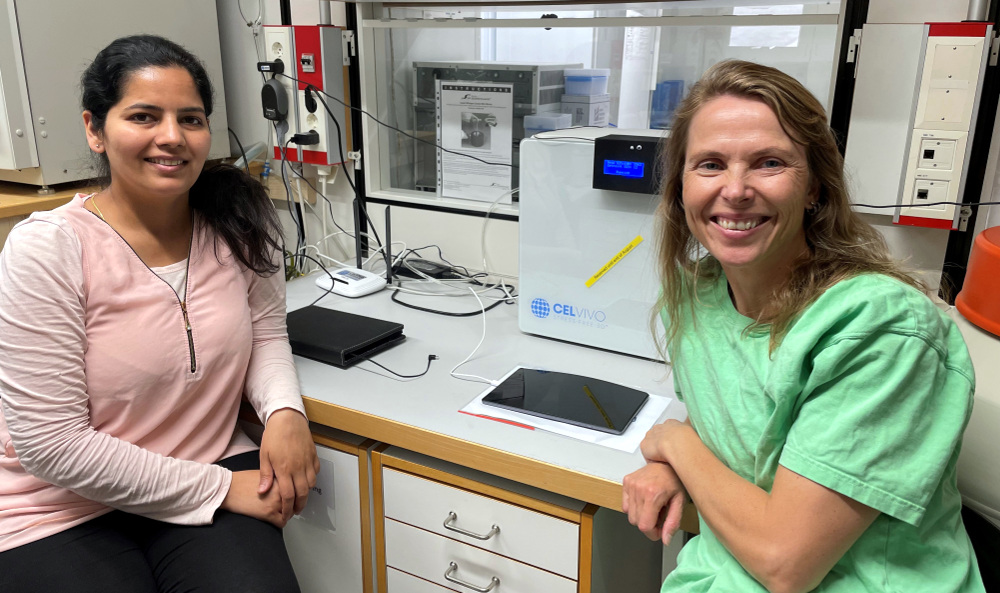Arooj Munir and coworkers cultured osteoblasts in the 3D rotating bioreactor from CelVivo and identified osteocytes embedded in a mineralised collagen matrix, similar to native bone.
Researchers from our Department have made a groundbreaking discovery in the field of bone cell research, creating a unique 3D model that mimics the natural formation and maturation of bone cells. This is a major stride in understanding bone development and diseases, laying the groundwork for potential medical advancements.
The study, conducted in collaboration with CelVivo, NTNU, Oslo University Hospital and the newly established Center for Functional Tissue Reconstruction (FUTURE), has developed a revolutionary system to study the transition of osteoblasts (cells that form new bone) to osteocytes (more mature bone cells). The team achieved this by growing human osteoblasts in a scaffold-free rotary culture condition, which created a bonelike structure with osteocyte-like cells embedded within a mineralized collagen matrix.
The research revealed that vitamins A, C, and D play crucial roles in the maturation process of bone cells. Adding these vitamins to the culture seemed to encourage the transition from osteoblasts to osteocyte-like cells. This aligns with previous studies, thus providing validation to the model.
Another important discovery was the protein expression in the osteospheroids, the 3D models. Proteins such as E11 and DMP1, markers of osteocyte development, were found to be expressed in osteocyte-like cells on the 14th day of culture, indicating the transition from osteoblasts to osteocytes. Sclerostin, a late-stage osteocyte marker, was expressed significantly by the 21st day.
"While this is a significant breakthrough, much remains to be explored. The team plans to study further aspects, such as the extracellular matrix components surrounding the osteocyte-like cells, their morphology and signalling mechanisms, and their interaction with the dynamic environment," explains Arooj Munir, the first author of this paper.

"This new model holds immense potential. It will provide us with a promising tool to study the maturation of osteoblasts into osteocytes, their communication mechanisms, and how they react to different conditions or stimuli, " said the study's leading researcher, Lene Bergendal Solberg .
The 3D osteospheroids developed in the study exhibited structures similar to those found in natural bone, including organised collagen fibrils scattered with cell hydroxyapatite (HAp) crystals. The spheroids also contained various stages of osteoblast differentiation and osteocyte-like cells, all encapsulated by a layer of cells that mirror the lining cells found in natural bone tissue. This remarkable resemblance to actual bone structures presents a compelling model system for studying the transformation of osteocytes, the interaction between different bone cells, and the process of mineralisation within a bone-like structure in vitro, all without the use of artificial scaffolds. Moreover, the presence of a natural extracellular matrix in the model can pave the way for research into tissue-specific biochemical, biophysical, and mechanical properties
This research is another testament to the University of Oslo's commitment to advancing scientific knowledge. It opens the door to further bone cell biology and disease treatment exploration.
Link to publication:
Munir, A., Reseland, J.E., Tiainen, H., Haugen, H.J., Sikorski, P., Christiansen, E.F., Reinholt, F.P., Syversen, U. and Solberg, L.B. (2023), Osteocyte-Like Cells Differentiated From Primary Osteoblasts in an Artificial Human Bone Tissue Model. JBMR Plus e10792. https://doi.org/10.1002/jbm4.10792
